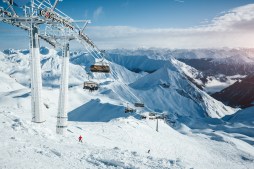Exploring the Key Functions and Responsibilities of the Supreme Court
The Supreme Court of a country holds immense power and plays a vital role in shaping its legal system. As the highest judicial authority, it serves as the ultimate arbiter of justice, ensuring the fair interpretation and application of laws. In this article, we will delve into the key functions and responsibilities of the Supreme Court, shedding light on its crucial role in upholding justice and preserving the rule of law.
Safeguarding Constitutional Rights
One of the primary functions of the Supreme Court is to safeguard constitutional rights. In many countries, including the United States, the Constitution acts as a fundamental framework that governs all aspects of governance. The Supreme Court serves as a guardian of these constitutional rights by interpreting and clarifying their scope and limits.

Through its power to review legislation and executive actions for constitutionality, the Supreme Court ensures that laws do not infringe upon individual rights protected by the Constitution. This function is crucial in maintaining a balance between government powers and individual liberties, preventing potential abuses or overreach.
Resolving Legal Disputes
Another significant responsibility bestowed upon the Supreme Court is resolving legal disputes. It acts as an appellate court for cases that have already been through lower courts but are subject to further review due to their importance or complexity.
The Supreme Court’s decisions often set important precedents that lower courts must follow in similar cases. This function creates consistency and predictability within legal systems, ensuring equal treatment under the law for all citizens.
By hearing appeals on various matters such as civil rights, constitutional issues, or conflicts between states or federal government entities, the Supreme Court plays a vital role in settling disputes that have far-reaching implications for society.
Interpreting Laws
The interpretation of laws is another key function carried out by the Supreme Court. When lower courts face ambiguity or conflicting interpretations regarding statutes or regulations, they can seek guidance from higher courts, ultimately leading to the Supreme Court for a final resolution.
Through its interpretation of laws, the Supreme Court shapes legal principles and establishes guidelines for future cases. This function is crucial in maintaining consistency and fairness within the legal system, preventing arbitrary or inconsistent application of laws.
Furthermore, the Supreme Court’s interpretations often reflect societal changes and evolution in values. As social norms evolve, the Court plays a pivotal role in interpreting laws in light of these changes, ensuring that justice is served while aligning with the current needs and expectations of society.
Judicial Review
Perhaps one of the most distinctive functions of the Supreme Court is its power of judicial review. This power allows the Court to review acts of legislation or executive actions to determine their constitutionality.
Through judicial review, the Supreme Court acts as a check on potential abuses by other branches of government. It ensures that laws created by legislative bodies or actions taken by executive authorities do not violate constitutional rights or exceed their prescribed powers.
This function empowers the Supreme Court to strike down unconstitutional laws or executive actions, safeguarding individual liberties and preserving the balance between branches of government. The power of judicial review has a profound impact on shaping public policy and ensuring adherence to constitutional principles.
In conclusion, the role of the Supreme Court is multi-faceted and essential for upholding justice within a legal system. From safeguarding constitutional rights to resolving legal disputes, interpreting laws to exercising judicial review, this highest court plays a crucial role in shaping societal norms and preserving democracy. Its decisions have far-reaching implications for individuals, governments, and society as a whole.
This text was generated using a large language model, and select text has been reviewed and moderated for purposes such as readability.











